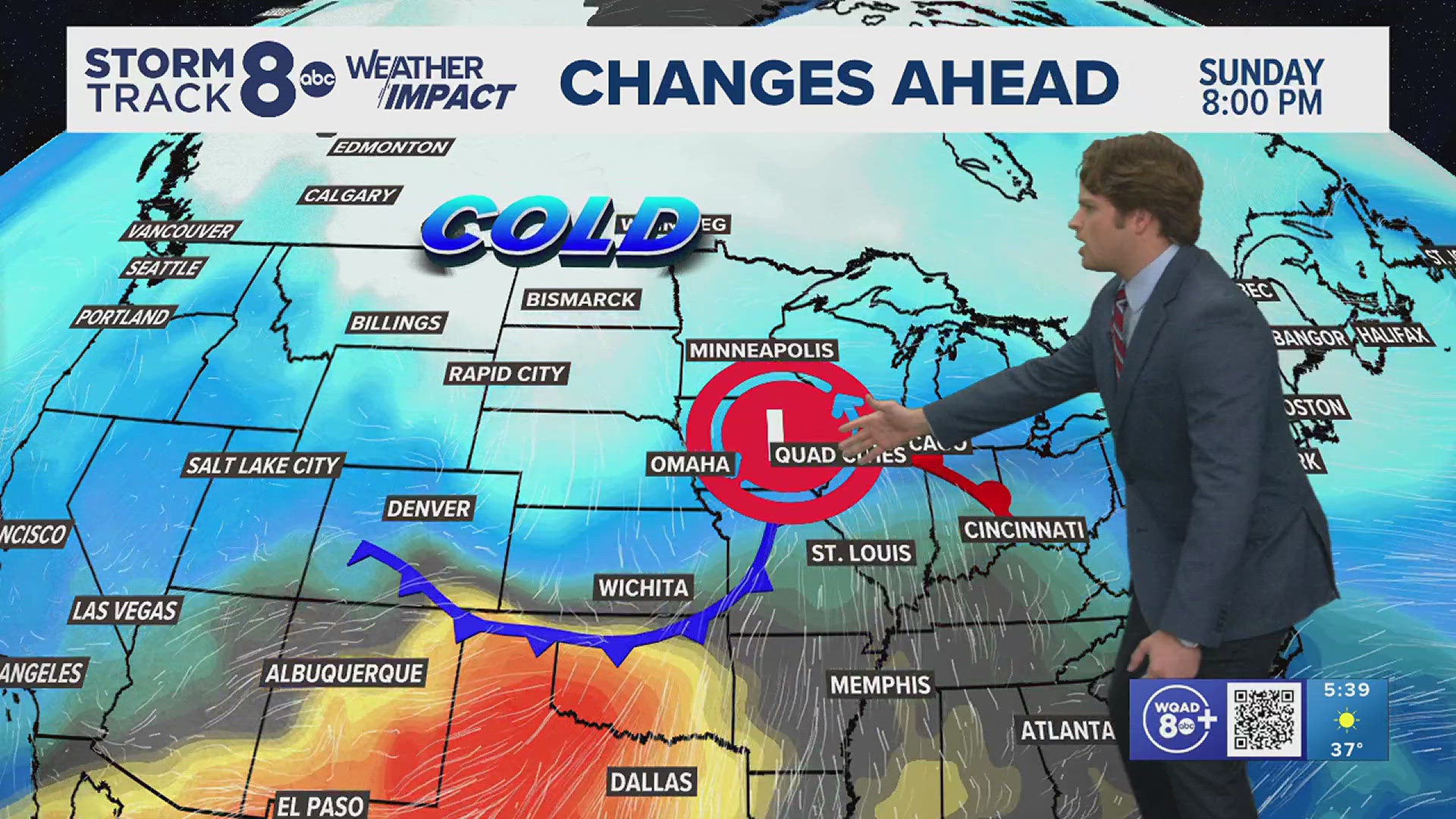MOLINE, Ill. — Interest in weather has been documented since the birth of the U.S.
Thomas Jefferson would write daily weather observations, and of course, there were Benjamin Franklin's famous lighting rod and kite experiments.
The 19th century saw the foundation and early growth of understanding the weather and how to forecast it.
In 1821, William Redfield, a self-taught scientist and merchant that would later become the first president of the American Academy for the Advancement of Science, discovered that storms rotated through observing how trees had fallen in different directions after a storm.
James Espy was the first scientist to use telegraphs to collect weather observations. He also studied the progression of storms, which would become the basis for weather forecasting. Espy was the government's first meteorologist working for the war and navy departments. He came up with a theory about the progression of storms in 1840 that conflicted with Redfield’s theory, sparking an interest in people to learn more about the weather.
Dr. Joseph Henry experimented with telegraphy and wanted to use it to collect data for climate studies and forecasting. He was the first president of the Smithsonian Institution, and by 1849, he persuaded telegraph companies to transmit local weather. By 1857, telegraph stations from New York to New Orleans were sharing observations to the Smithsonian for climatological studies.
Henry presented climate scientist Eunice Newton Foot's research at the American Academy for the Advancement of Science in 1856. During this time, it was frowned upon for women to do research presentations. Foote had done research on the ability of atmospheric water vapor and carbon dioxide to affect solar heating. She was one of the world's first female climate scientists.
Another scientist to help with the development of forecasting was Increase A. Lapham. He used real-time data to provide warnings for Lake Michigan.
From 1860 to 1861, Lapham worked with Dubuque-native Dr. Asa Horr to make a series of simultaneous observations three times a day to prove that storms could be tracked from west to east. Other predictions included squall lines for the Great Lakes, which helped improve warnings.
In 1861, Dr. E.T. Caswell started chart comparison data. His diagrams were presented at the Wisconsin State Fair, giving the public the ability knowledge of storm predictions. His diagrams would later become what we know of today as isochrone lines of storms fronts.
After making so much progress in the first half of the 19th century, the Civil War paused advancements. But, once it was over, Henry would call for the government to establish a national weather service.
By 1869, Cleveland Abbe, head of the Cincinnati Observatory, saw forecasting differently than the previous scientists mentioned. He saw how forecasting could help make commerce better, which was greatly needed after the Civil War. Although he did not call what he was doing forecasting, he called it probabilities. He published his three-month weather observations findings in the Cincinnati Weather Bulletin.
In that same year, a bad shipwreck happened on the Great Lakes that resulted in deaths. Lapham was furious that this happened and firmly believed that no lives would have been lost if forecasting was used. A week later, he submitted petitions and memorials to Wisconsin congressman Halbert E. Paine that urged the establishment of a government weather service.
Pain agreed with Lapham's petition and introduced a bill before Congress on Dec. 14, 1869. It didn't pass because of the amount of effort it would have taken to collect observations at the same time every day and transmit the observations reliably and consistently.
U.S Army Chief Signal Officer General Albert J. Meyer told Paine that he should place his government weather service under the signal service. In February 1870, the bill passed in Congress and was then sent to the White House within a week.
On Feb. 9, 1870, President Ulysses S. Grant signed the bill into law, establishing the National Weather Service. Meyer would become the first director.
Since the National Weather Service was established in 1870, it has continued advancements by forecasting with satellites in the 20th century, later advancing with 21st-century models and systems.



